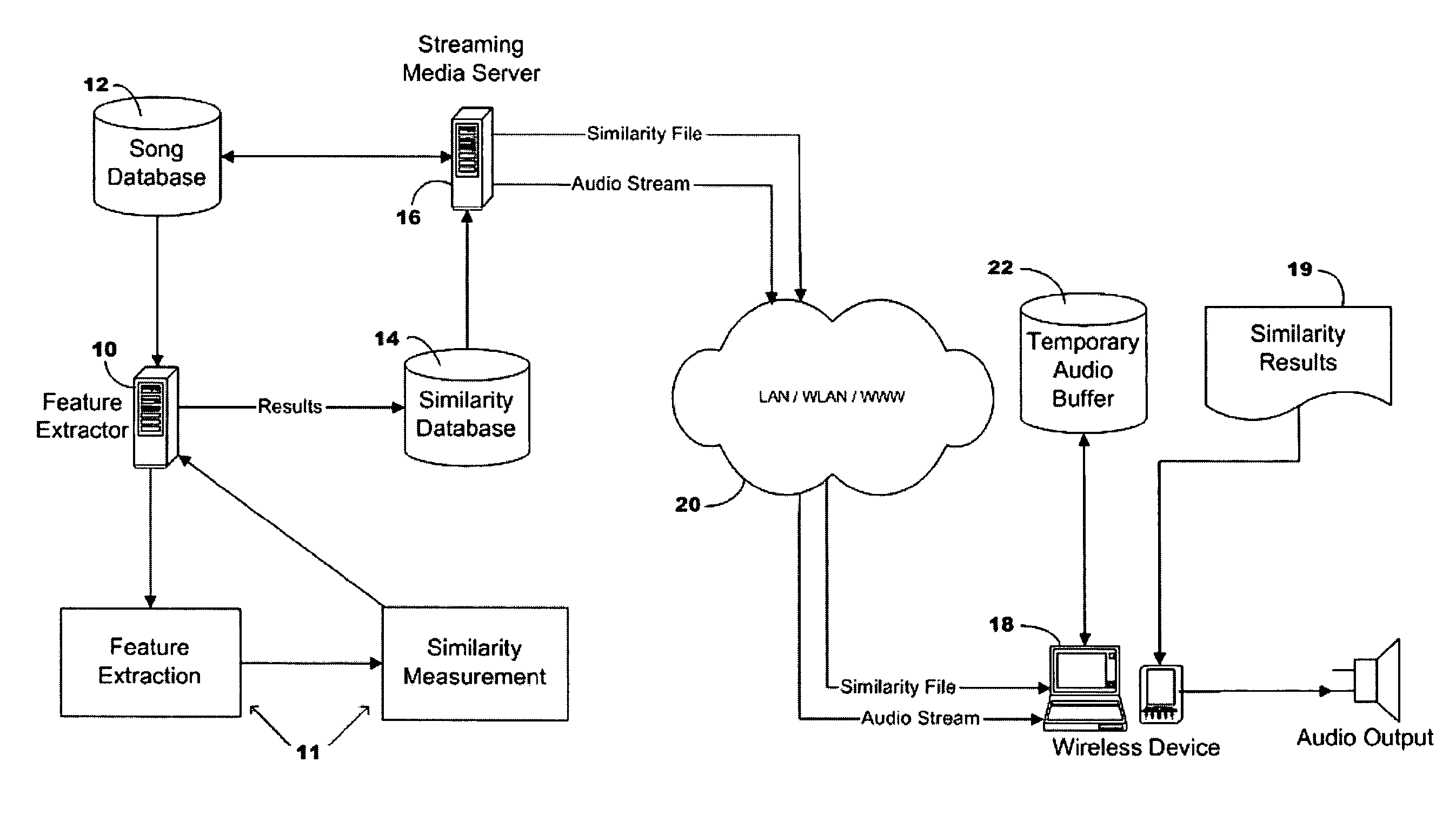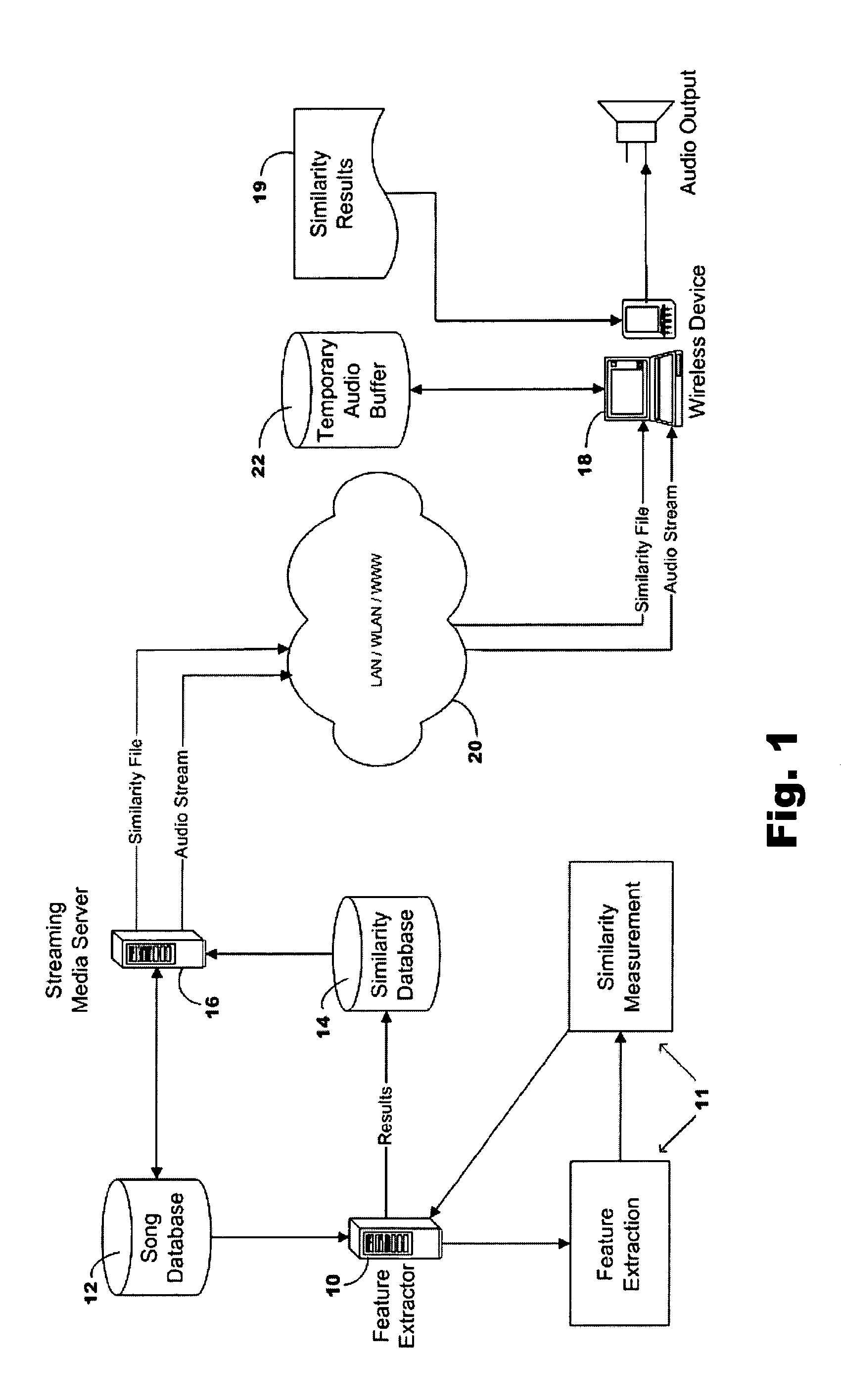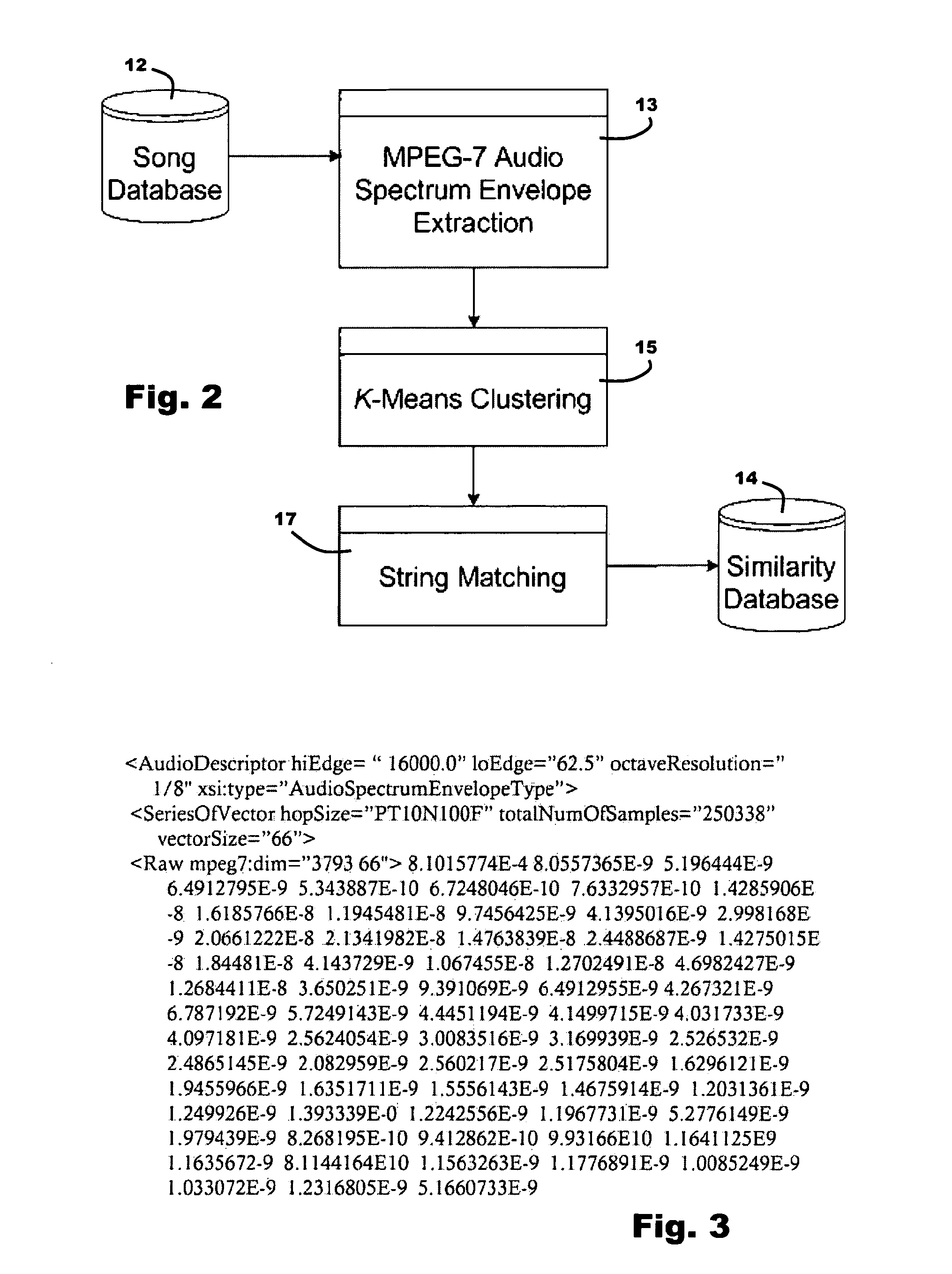System and method for streaming music repair and error concealment
a technology of error concealment and error concealment, applied in speech analysis, electric instruments, speech analysis, etc., can solve the problems of large dropouts, difficult to repair large dropouts, and relatively unreliable streaming media across the internet, and achieve the effect of efficient computation
- Summary
- Abstract
- Description
- Claims
- Application Information
AI Technical Summary
Benefits of technology
Problems solved by technology
Method used
Image
Examples
Embodiment Construction
[0040]An embodiment of the invention will now be described, by way of example only, with reference to the accompanying drawings, in which:
[0041]FIG. 1 is a general overview of the system of the invention;
[0042]FIG. 2 is a flow diagram of the system of the invention for identifying similarity in an audio file;
[0043]FIG. 3 shows a portion of a sample MPEG-7 XML output of the Audio Spectrum Envelope (ASE) of a music file;
[0044]FIG. 4 shows the overlapping of sampling frames for a sample waveform;
[0045]FIG. 5 shows a sample output for K-means clustering performed on the ASE data of a sample audio file;
[0046]FIG. 6 shows a sample K-means cluster representation of a song for varied time frame windows;
[0047]FIG. 7 shows an example of a backward string matching search;
[0048]FIG. 8 illustrates a graphical representation of a media handler application with multiple pipelines;
[0049]FIG. 9 illustrates the process flow used to determine switching between pipelines;
[0050]FIG. 10 illustrates the t...
PUM
 Login to View More
Login to View More Abstract
Description
Claims
Application Information
 Login to View More
Login to View More - R&D
- Intellectual Property
- Life Sciences
- Materials
- Tech Scout
- Unparalleled Data Quality
- Higher Quality Content
- 60% Fewer Hallucinations
Browse by: Latest US Patents, China's latest patents, Technical Efficacy Thesaurus, Application Domain, Technology Topic, Popular Technical Reports.
© 2025 PatSnap. All rights reserved.Legal|Privacy policy|Modern Slavery Act Transparency Statement|Sitemap|About US| Contact US: help@patsnap.com



